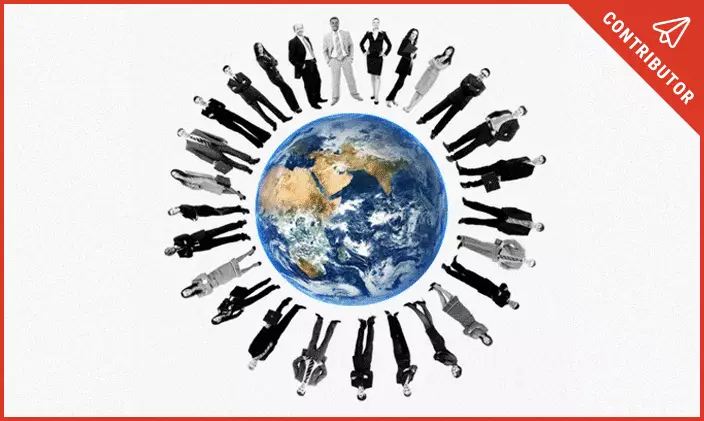What does “real-world faculty” mean?

Written by Laurie Davies

Welcome to the real world. When people use that phrase, they usually mean: Welcome to the world as it is, not as it theoretically could be.
University of Phoenix instructors describe this idea to a T. Real-world success depends on real-world experience, so real-world faculty at University of Phoenix bring an average of more than 28 years of professional industry experience to the classroom as of the 2023 reporting year. Plus, they average 16 years of UOPX teaching experience.
Consider that, in that same year, UOPX faculty held positions in business, industry, healthcare, education and other sectors in the following numbers:
Additionally in reporting year 2023, 58% of our instructors were female, while 12% were Black/African American, 4% were two or more races, 4% were Asian and 3% were Hispanic/Latino.
All this adds up to an experienced, diverse faculty that not only has decades of experience in the workplace, but also has a long teaching tenure with University of Phoenix. They have a deep understanding of what makes adult learners tick and how to help them succeed academically.
Experience counts
“The reason our faculty stay is so many of them believe they are making a difference in their profession and a difference in the lives of their students,” says Vice Provost of Strategy Marc Booker, PhD.
Irene Blundell, MAM, HROB, an instructor with University of Phoenix since 1996 and a three-time Faculty of the Year award winner, echoes that sentiment wholeheartedly. As of November 2023, Blundell had taught 268 courses and 4,059 students — and counting.

Irene Blundell, MAM, HROB
UOPX Instructor
“I have had students as young as 16 and as old as 75. They’re all in school because they want to move their lives forward through education. It’s so rewarding for us to help them and to be part of that journey,” she says. “It’s a privilege, honestly. I think other instructors feel the same way.”
At some universities, faculty work full time in academia. At University of Phoenix, its practitioner faculty are required to have both academic credentials and scholarship or experience in their professional field.
Most faculty at University of Phoenix hold a degree one level higher than the subject level they teach. There are also other standards to meet faculty qualifications, which generally require meeting equivalent credentials through testing and currency of work experience — in alignment with requirements from the University’s institutional and programmatic accreditors. A full list of faculty credentials can be found by scrolling to the bottom of the University’s faculty landing page.
University faculty bring experience from their real-world environments into the classroom too. “This is not their full-time job. In most cases, if they are teaching health courses, they work in healthcare. If they are teaching business, they work in business and tech,” Booker says.
Why does the “real-world” side of this matter?
“[Many of] our students are looking to ‘career up’ or gain more skills. They’re not looking for instructors who will just give them a book. They want to know how the book applies in a real-world setting,” Booker says.
This merging of knowledge and experience boils down to applicability. “It’s one thing for an instructor to emphasize the importance of having empathy at the patient’s bedside. But what if that instructor is working at the bedside — or managing nurses who are — and recently had to demonstrate empathy with an agitated patient who has just gotten bad news? That moves the faculty member from an academic perspective to an applied perspective,” Booker says.
Blundell, the lead faculty area chair for the University’s College of General Studies, says there’s nothing like bringing real-world experience into the classroom. “There’s always something that has happened in professional settings that applies to our class discussion,” she says.
Not only that, but as faculty members who teach on top of working other jobs, University faculty understand the unique time demands that their students face. “Our faculty tell our students, ‘Yes, we’re working full time in the field. Yes, we have families. Yes, we know it’s hard,’” Blundell says.
As one of the instructors of GEN 201 — the undergraduate entry-point course at University of Phoenix — Blundell knows her main role is to help get students comfortable with UOPX systems and build their confidence.
Personally, she feels like she helps new students adjust to the transition of adding school on top of what’s already on their professional plates. “I often tell my students, ‘I got my master’s in management from University of Phoenix in 1992 while I was working full time. If I can do it,’” she’ll say with a good-natured laugh, “‘so can you.’”
With practitioner faculty on their side, students gain valuable insight into industry best practices and trends, along with potential career and networking allies in the professional fields they plan to enter — both with faculty and fellow students.
“We keep our class sizes [relatively] small. We know our students’ names and we know what their goals are,” Blundell says.
Sometimes University faculty members are even able to complement the work of academic counselors by helping students define their academic and career goals. “Sometimes a student and faculty member work together to unlock a career potential for that student,” Booker says. “The faculty member might see something special and say, ‘This is what you need to home in on — and I know because I’m a hiring manager,’ or, ‘These are the trends I’m seeing right now.’”
In the end, it seems to be working. University students consistently report that University of Phoenix faculty are top-notch. When rating how likely they would be to recommend their instructor to other students (on a 0 to 10 scale, with 10 being extremely likely), faculty are rated 8.9 out of 10.*
And that’s just keepin’ it real. Or, as University of Phoenix would say, real world.
*Survey data is based on 96,098 student responses to end-of-course survey. All responses were collected between September 2, 2021, and August 31, 2022.
Read more articles like this:

ABOUT THE AUTHOR
A journalist-turned-marketer, Laurie Davies has been writing since her high school advanced composition teacher told her she broke too many rules. She has worked with University of Phoenix since 2017, and currently splits her time between blogging and serving as lead writer on the University’s Academic Annual Report. Previously, she has written marketing content for MADD, Kaiser Permanente, Massage Envy, UPS, and other national brands. She lives in the Phoenix area with her husband and son, who is the best story she’s ever written.



